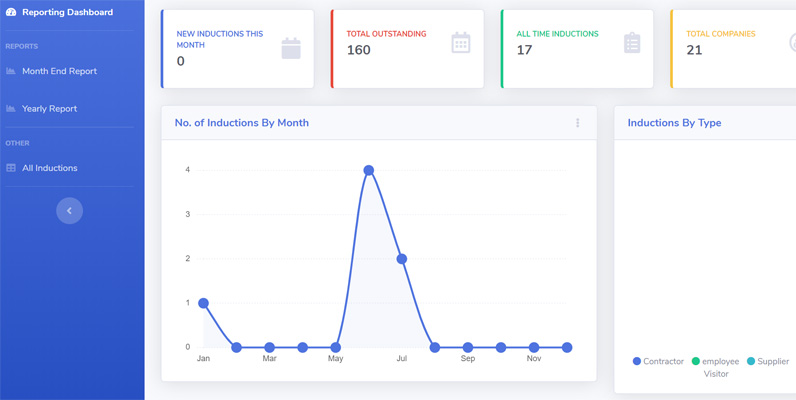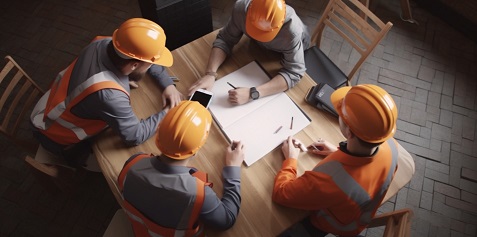Contractor Onboarding: Best tips, Guide and Onboarding Setup Contractor onboarding is a critical part of ensuring the safety and job readyness of contractors and subcontractors working in your workplace. Onboarding contractors into your work site ensures they have a consistent onboarding experience, are aware of important safety and site access procedures, important policies to adhere to, know how to report an incident when something goes wrong, how to be aware of hazards and report new ones and ensuring they know what to do in the event of an emergency such as emergency evacuation procedures.
Contractors also need post day 1 onboarding around ongoing works on site.
Contractor onboarding is a critical part of ensuring the safety and job readyness of contractors and subcontractors working in your workplace. Onboarding contractors into your work site ensures they have a consistent onboarding experience, are aware of important safety and site access procedures, important policies to adhere to, know how to report an incident when something goes wrong, how to be aware of hazards and report new ones and ensuring they know what to do in the event of an emergency such as emergency evacuation procedures.
Contractors also need post day 1 onboarding around ongoing works on site.
Best practice contractor onboarding commonly involves collecting materials from contractors that they need to provide and have verified as part of working on site such as insurances, certifications and evidence of training, presenting materials to them such as safety orientation content and assessing them on their knowledge to ensure they have read and understood these materials. View Templates, Check Lists and Forms Setting up a Contractor Onboarding Process At its core, contractor onboarding is simply a system that allows companies to gain new contractors in an efficient manner. Everything from registration processes, skills assessment, background checks and documents can all be handled efficiently through this process. It'll even go on to automate parts of the hiring procedure so that more focus can be put into finding excellent people to work for your team.
At its core, contractor onboarding is simply a system that allows companies to gain new contractors in an efficient manner. Everything from registration processes, skills assessment, background checks and documents can all be handled efficiently through this process. It'll even go on to automate parts of the hiring procedure so that more focus can be put into finding excellent people to work for your team.
A great structure for what to onboard your contractors on might include: - Location: photos and GPS details, - specific site layout, - access notes - specific site amenities - first aid kit - specific emergency service contact details in relation to the specific transmission site and locations - asbestos on site, status and location - site specific chemicals, management and location - confined spaces at location - phone coverage - known environmental conditions at site - flora, fauna and heritage at site - lighting and emergency access lighting, night works - Plant machinery - Access to mast / climbing - Installation of equipment - New Hazards on site See an example contractor onboarding setup. What should you collect when onboarding contractors? The common fields include insurances, evidence of training and related licenses and certifications based on the contractors risk level, job activity and role. If they are a high risk construction tasks contractor you would collect a far more comprehensive set of materials compared to say a low risk contractor.
Other materials collected in the contractor onboarding process might also include permits and procedures in order to verify and ensure that the contractor has the right systems in place in order to conduct the work and reduce the risk of injury to boith themselves and others in the workplace.
This might involve verification of policies and procedures, existing safety history and prior incidents, examining specific procedures and evidence of training and safety systems being used by the contracting company for their staff.
The common fields include insurances, evidence of training and related licenses and certifications based on the contractors risk level, job activity and role. If they are a high risk construction tasks contractor you would collect a far more comprehensive set of materials compared to say a low risk contractor.
Other materials collected in the contractor onboarding process might also include permits and procedures in order to verify and ensure that the contractor has the right systems in place in order to conduct the work and reduce the risk of injury to boith themselves and others in the workplace.
This might involve verification of policies and procedures, existing safety history and prior incidents, examining specific procedures and evidence of training and safety systems being used by the contracting company for their staff.
By streamlining how contractors are added onto your workplace regime, everyone involved will have less paperwork headaches and save time when interviewing potential hires - leaving you free to concentrate on taking care of other important matters related to running the business itself. If implemented correctly, this could prove invaluable as it creates a safe environment for both employees and the company they are contracted with whilst keeping costs low at maximum efficiency levels What steps to include when onboarding contractorsWhen it comes to onboarding contractors, there are several steps you should always consider. From setting expectations to laying out contracts, your company needs to address all facets of the process. Depending on what type of business you have and who the contractor is for, this can be a daunting task - but following our guide will provide you with all the information necessary to get it right first time! First things first - set a structure that lays out the specific job responsibilities and boundaries before beginning work. It's important for everyone involved in the project (including yourself) to understand exactly what their role is and how much responsibility they will take on during onboarding as well as throughout subsequent interactions. Communication cannot be overemphasised here; both sides need to keep dialogue open delivering clarity at all times over expected outputs which would minimise any potential misunderstandings later down the line.. After establishing an understanding between parties, ensure that tools such as digital signatures enable compliance with applicable laws relating towards contracting arrangements in your part of country or region along with policies like those regarding fair wages or health & safety regulations. Finally, don't forget actual physical details like: email addresses; bank account data; contact numbers etc these must all be correct so payments go through without issues when invoices are ready for processing. All these components make up getting contractors setup correctly from start-to-finish providing employers risk mitigation strategies against unseen liabilities when handling third party personnel and resources. Common steps might include: - a safety orientation onboarding your contractors before they start work on site - contractor check list - assessments to make sure contractors understand their onboarding materials - issuing a certificate of completion or card to certify completion of the contractor onboarding process How does your contractor onboarding process compare?Create your own custom contractor onboarding workflows: 
|